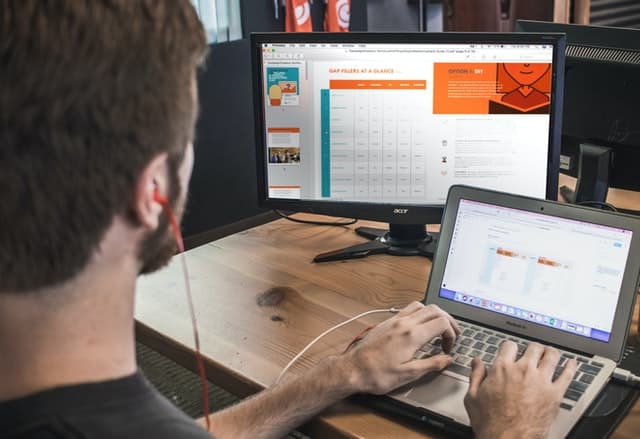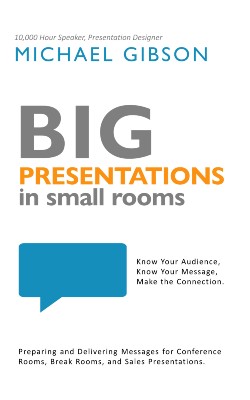You have a goal. You know your audience. You identified the audience benefit, and you organized your content to meet their needs.
This preparation puts you on the path toward rapport. But there is more to know, more to pursue.
Let’s get started!
PRESENTATION RAPPORT AMONG FRIENDS
Think about your circle of friends. They are a unique group. You approach different friends for help with different issues.
With some friends, you can share secrets. You can rest knowing that the private information will go no further.
Other friends might be more fun to hang out with when you need a good laugh. When you are looking for a good time, those are the ones you might call. But you know not to share sensitive information with them because they will not respond appropriately, or perhaps they will not protect your secrets.
Do you have any friends who fit both categories? Such friends are a gift.

PRESENTATION RAPPORT AND EQ
Have you heard the research regarding emotional intelligence (EQ)? If so, then you’ve seen the underestimated value of a high EQ. It yields more Return on Investment when it is the focus of training. It matters more than IQ or technical competence. Those with high EQ make better choices.
Why is that?
The short answer is that emotionally intelligent people know how to build rapport. In the workplace, people with high IQs know how to manipulate information to achieve process or product-based results. At the same time, it is common for them to struggle with matters of emotional intelligence. They know how to deal with information, but they struggle to deal with people.
People with high emotional intelligence are talented in human interactions. They know how to deal with people. They know how to build rapport.
So what is this thing?
What is rapport?
Rapport is a word that describes a relationship built on mutual trust and/or affinity. I encourage you to think “and” not “or.” Let’s pursue both trust and affinity.

PRESENTATION RAPPORT AND TRUST
To work with people you trust is a gift.
Trust forms when people can count on you to meet expectations. For example, when you tell a secret, there is an expectation that the secret will be honored by the other person. You trust them not to share that information with other people.
When I deliver a presentation, people can trust that I will arrive early to set up. I will be prepared, and I will not share information that is not meant to be shared.
My customers can relax because they can trust me.
Do your friends trust you? There are two easy tests.
- Simply notice the kind of information they share with you.
- Pay attention to how much you tend to share information that you know other people would be uncomfortable with you sharing. Would you be worried if other people knew what you were sharing about them?
Do your customers, coworkers, or bosses trust you? Here are two easy tests.
- Do they feel the need to remind you of things constantly?
- Do they keep you out of the loop on sensitive issues?
These questions are not perfect; they do not take every situation into account. For example, if you are new to a job, there will naturally be more reminders because they are still learning to trust you.
And there might be sensitive information that is kept from you because it is none of your business. Or it would be inappropriate to divulge that information. Consider the questions as clues, not proof.
The goal is to be known as a trustworthy person. You can be counted on to meet expectations.
Presentation rapport is built on trustworthiness.

PRESENTATION RAPPORT AND AFFINITY
It is also built on affinity. To work with people you like is a gift! Affinity is another word for likeability.
Affinity forms when time with people creates a desire to spend more time with them. For example, if a friend thinks of you when they just want to hang out, you have affinity. If a coworker thinks of you when they think of people they enjoy meeting in the breakroom, it is due to affinity. You are likeable!
When I deliver a presentation, I seek to create affinity by meeting new people and reconnecting with pre-existing relationships. I focus conversations on them so that we can discuss things that are interesting and meaningful to them. I am quick to smile and to affirm their ideas and experiences. Thankfully, I am enough of a people-person that this comes naturally.
For some people, this requires self-discipline and focus. They are more comfortable dealing with non-people issues. They are more at home with logistics and detail-oriented work. I am thankful for these people because the details are what I tend to miss.
How do you know if you have affinity with others?
Simply notice if they chose to be with you when it is not required. Are you sought out by others for no other reason than they just like being around you? That is affinity.
Presentation rapport is built on affinity. It is a worthy pursuit.

PRESENTATION RAPPORT IS BEST WHEN IT HAS BOTH
When delivering presentations, seek to have both elements of rapport. Be trustworthy and be likable. If you can achieve both, your presentations will gain influence because the audience trusts you and they like you. You are a gift. You provide both!
Are you looking for an encouraging and helpful community of people whose work involves presentations? Join the Workplace Presentations Hub!




